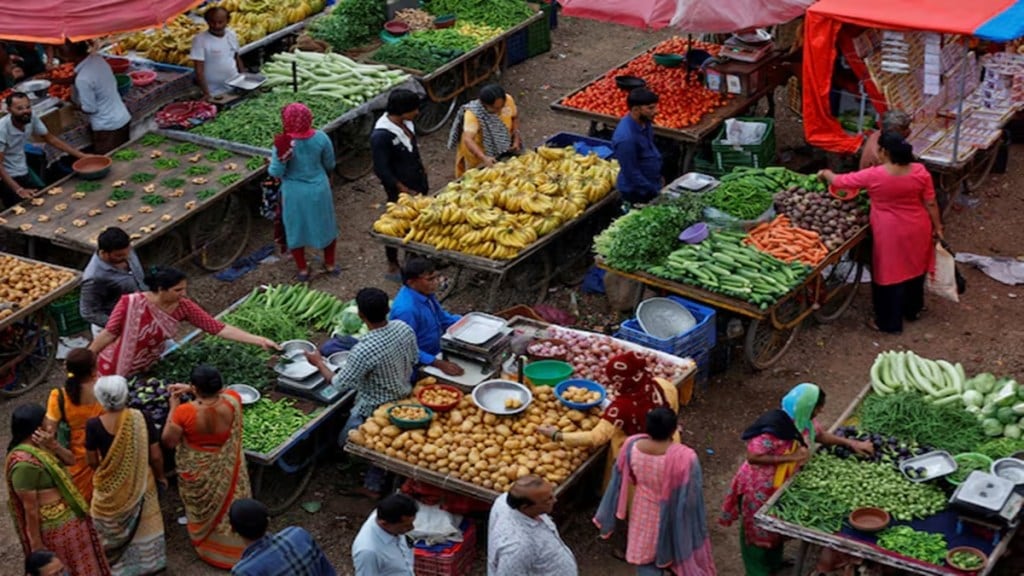Retail food inflation eased for the four consecutive months to a 21-month low of 3.75% in February compared to 5.97% in January, as prices of vegetables, pulses and spices declined with winter harvest arriving in the markets.
The consumer food price index (CFPI) declined by 2% sequentially last month compared to January. In February last year, the food inflation rate was 8.66% while in May, 2023 it was reported at 2.96%.
However experts stated higher than normal temperature prevailing currently may impact the rabi crops harvest and may push up prices in coming months
Inflation in onion and potato prices rose by 30.42% and 26.36% respectively in February, 2025 on year. Tomato inflation declined by 28% on year last month, while in January prices declined by 7% on year.
The inflation in the vegetable category declined by 1.07% last month, compared to an inflation of 11.35% in January. However, edible oil inflation remained high at 16.36% last month.
Overall cereal inflation in February was 6.1% and had been in single digits for the past several months because of softening of rice prices due to bumper harvest.
However inflation in wheat last month was 9.17% on year.
“There was a sharp fall in inflation for vegetables, pulses and spices which were also very high thus contributing to base effect,” Madan Sabnavis, chief economist, Bank of Baroda, said. However Sabnavis said ‘the problem areas appear to be fruits and vegetable oils. The latter has also been affected by the volatile rupee which has pushed up imported cost,”.
Inflation in mustard oil and refined oil were 19.48% and 22.23% respectively last month on year. India imports about 58% of its edible oil consumption.
Inflation in pulses declined by 0.35% last month from an inflation of 2.59% in January on the prospects of robust kharif as well as rabi harvest. Inflation in pulsts were as high as 113% in August,2024.
Retail inflation in pulses have been in double digits since June, 2023 because of lower output of key varieties of pulses like chana, tur and urad.
However the gram split variety of pulses reported an inflation of 13.8% last month while in January the price rise was 16.97% on year. The price rise in arhar was in the negative zone (- 5.85%) last month because of a high base effect.
The government has offloaded close to 3 million tonne (MT) of wheat in the open market from the surplus stock of the Food Corporation of India this fiscal which is aimed at curbing future price rise.
Inflation in the meat and fish category was just 2.11% last month. Chicken and egg prices declined by 1.86% and 3.01% respectively in February. Price rise in milk last month was only 2.68% on year.
Inflation in spices continues to decline since September last year as it declined by 5.8% last month on year. Jeera prices declined by 28.77% on year.
